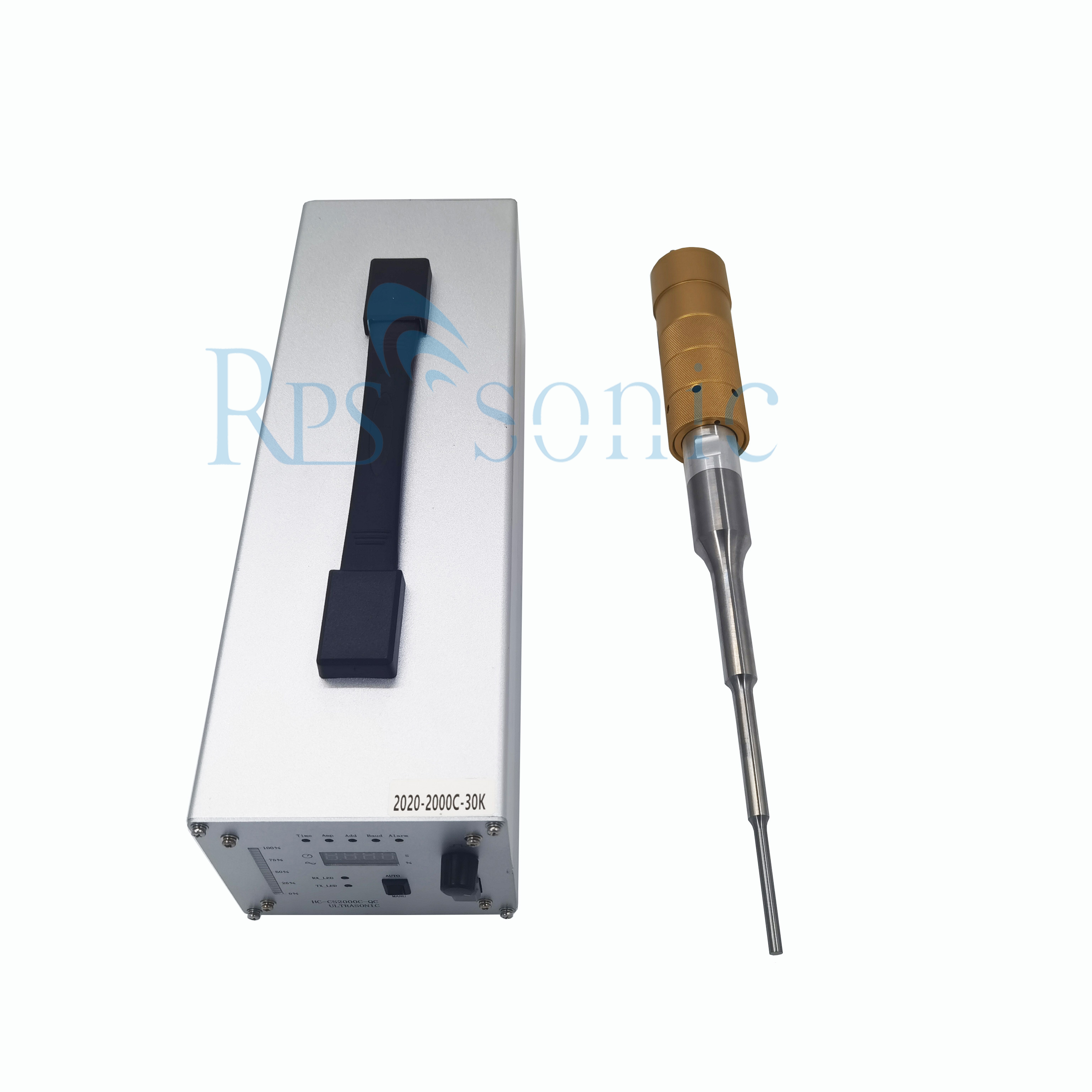Hangzhou Powersonic Equipment Co., Ltd. |
|
Verified Suppliers
|
|
28Khz 300w Ultrasonic Cell Crushing Equipment Ultrasonic Probe Ultrasonic Sonicator With Titanium Horn
28Khz Ultrasonic homogenizer sonicator equipment ultrasonic probe for Ultrasonic emulsification
Parameter
| Model | SONOL20-1000 | SONOL20-500 | SONOL28-300 | SONOL40-100 |
| Frequency | 20±0.5 KHz | 20±0.5 KHz | 28±0.5 KHz | 40±0.5 KHz |
| Power | 1000 W | 500 W | 300 W | 100 W |
| Voltage | 220/110V | 220/110V | 220/110V | 220/110V |
| Temperature | 300 ℃ | 300 ℃ | 300 ℃ | 300 ℃ |
| Pressure | 35 MPa | 35 MPa | 35 MPa | 35 MPa |
| Max Capacity | 8 L/Min | 5 L/Min | 1L/Min | 0.5 L/Min |
| Tip Head Material | Titanium Alloy | Titanium Alloy | Titanium Alloy | Titanium Alloy |
Description
Ultrasound has been used more and more widely in processes such as
chemistry, chemical engineering and biology. This is mainly based
on the cavitation of ultrasound. Ultrasonic cavitation refers to
the dynamic process of growth and collapse of micro-gas core
cavitation bubbles in the liquid that vibrate under the action of
sound waves, and when the sound pressure reaches a certain value.
When ultrasonic waves act on liquids, a large number of small
bubbles can be produced. One reason is that partial tensile stress
appears in the liquid to form a negative pressure. The decrease in
pressure makes the gas originally dissolved in the liquid
supersaturate and escape from the liquid and become small bubbles.
Another reason is that the strong tensile stress "tears" the liquid
into a cavity, which is called cavitation.
The cavitation threshold is the lower sound intensity or sound
pressure amplitude that causes the liquid medium to produce
cavitation. Only when the alternating sound pressure amplitude is
greater than the static pressure can negative pressure appear. And
only when the negative pressure * exceeds the viscosity of the
liquid medium, cavitation will occur. The cavitation threshold
varies with different liquid media. For the same liquid medium, the
cavitation threshold is also different for different temperatures,
pressures, cavitation nuclei radius and gas content. Generally
speaking, the lower the gas content of the liquid medium, the
higher the cavitation threshold. The cavitation threshold is also
related to the viscosity of the liquid medium. The greater the
viscosity of the liquid medium, the higher the cavitation
threshold. The cavitation threshold has a very close relationship
with the frequency of ultrasound. The higher the frequency of
ultrasound, the higher the cavitation threshold. The higher the
frequency of ultrasound, the more difficult it is to cavitation. To
produce cavitation, the intensity of ultrasound must be increased.
Ultrasound is widely used in various fields, which is the
application of its cavitation and its cavitation is accompanied by
mechanical, thermal, chemical, biological, and so on. The
application of mechanical and chemical effects, the former is
mainly manifested in the increase of the heterogeneous reaction
interface; the latter is mainly due to the high temperature and
high pressure generated in the cavitation process which causes the
decomposition of polymers, the breakage of chemical bonds and the
generation of free radicals. The processes that utilize mechanical
effects include adsorption, crystallization, electrochemistry,
heterogeneous chemical reactions, filtration, and acoustic
cleaning. The processes that utilize chemical effects mainly
include organic degradation, polymer chemical reactions, and other
free radical reactions.
The product is composed of ultrasonic numerical control driving power (hereinafter referred to as driving power), vibrating head and bracket accessories. Check the appearance of the equipment, check for damage, and check for loose parts. If there is any damage, notify the transportation company immediately after taking the photo. To facilitate the investigation, please keep the packaging materials in good condition.
Main advantage
1. Automatically adjust the frequency to start the vibration, without manual adjustment.
2. There is a temperature protection probe, which can effectively prevent damage to the sample due to temperature rise during the crushing process.
3. The external temperature control unit can be driven by the "normally open/normally closed" switch according to the feedback signal of the temperature probe.
4. The standard probe can be down-converted through MICROTIP below 1/2" to realize the crushing of trace samples.
5. There are different styles of probes such as closed cup (CUP) and continuous flow (FILLCELL) for purchase.
6. Tracking display output actual effective power.
7. Adjustable "work/intermittent" ratio time cycle pulse type work, the time range is from 0.5 seconds to 1 hour, improve the crushing effect, and effectively prevent temperature rise.
